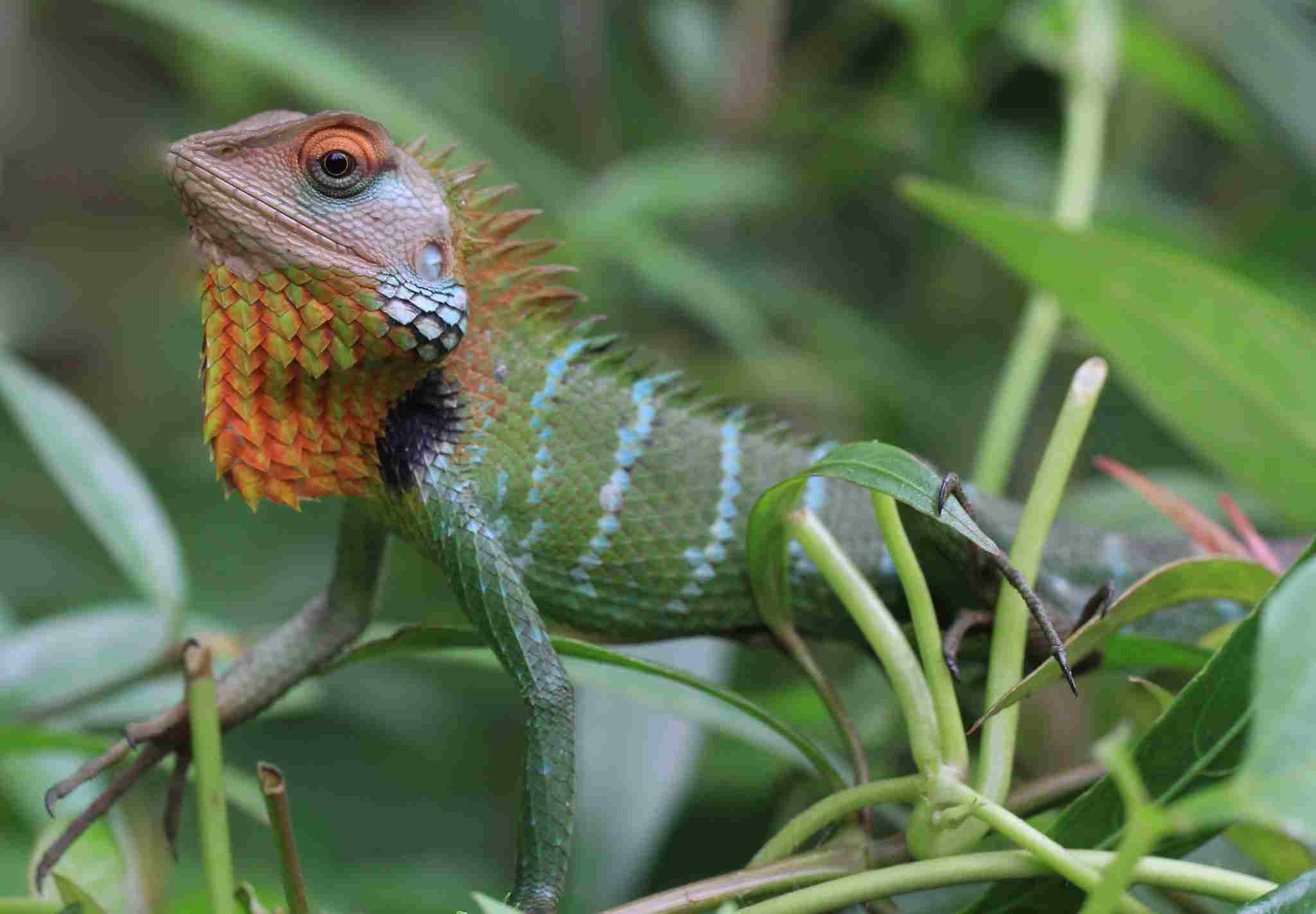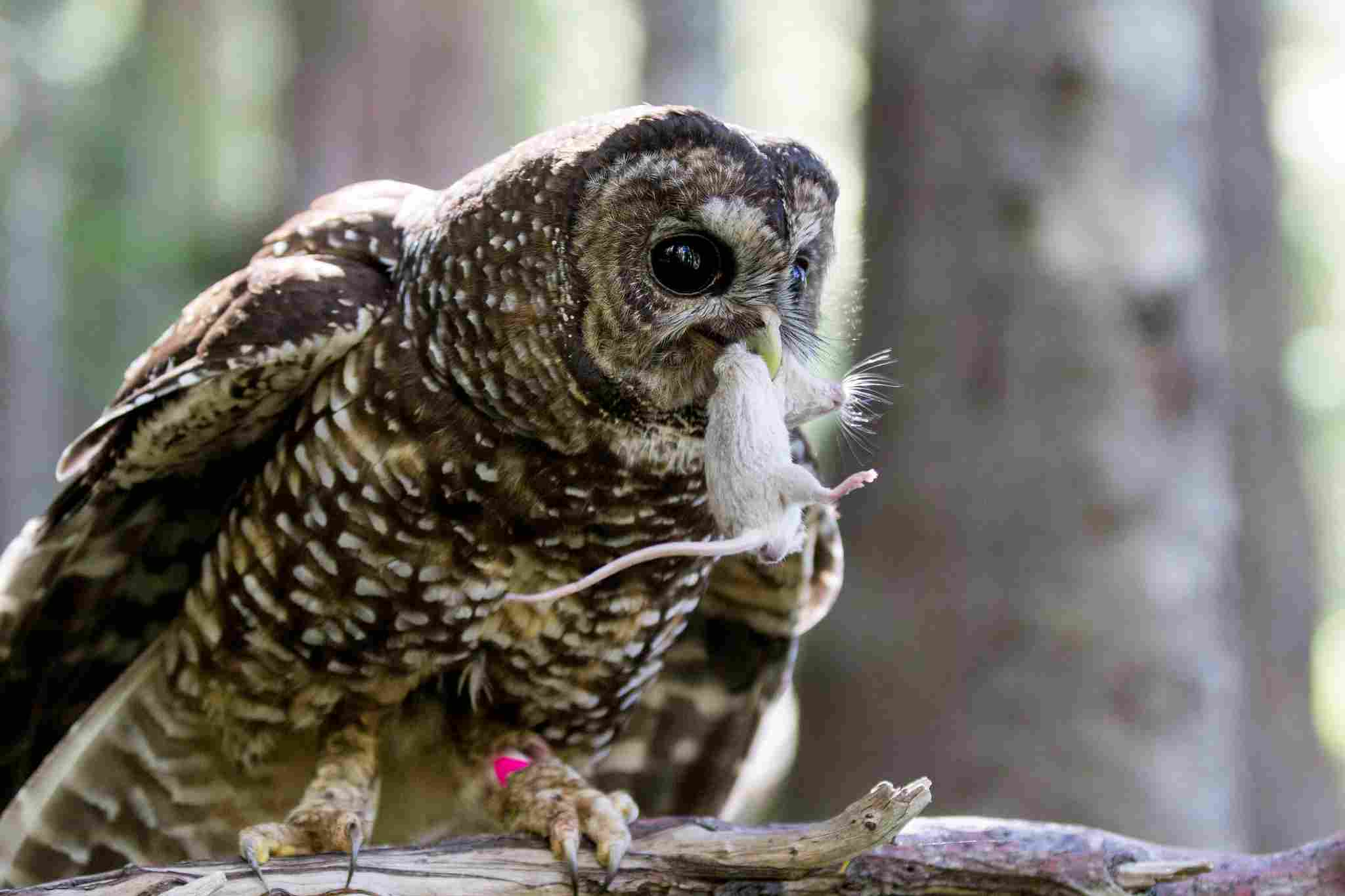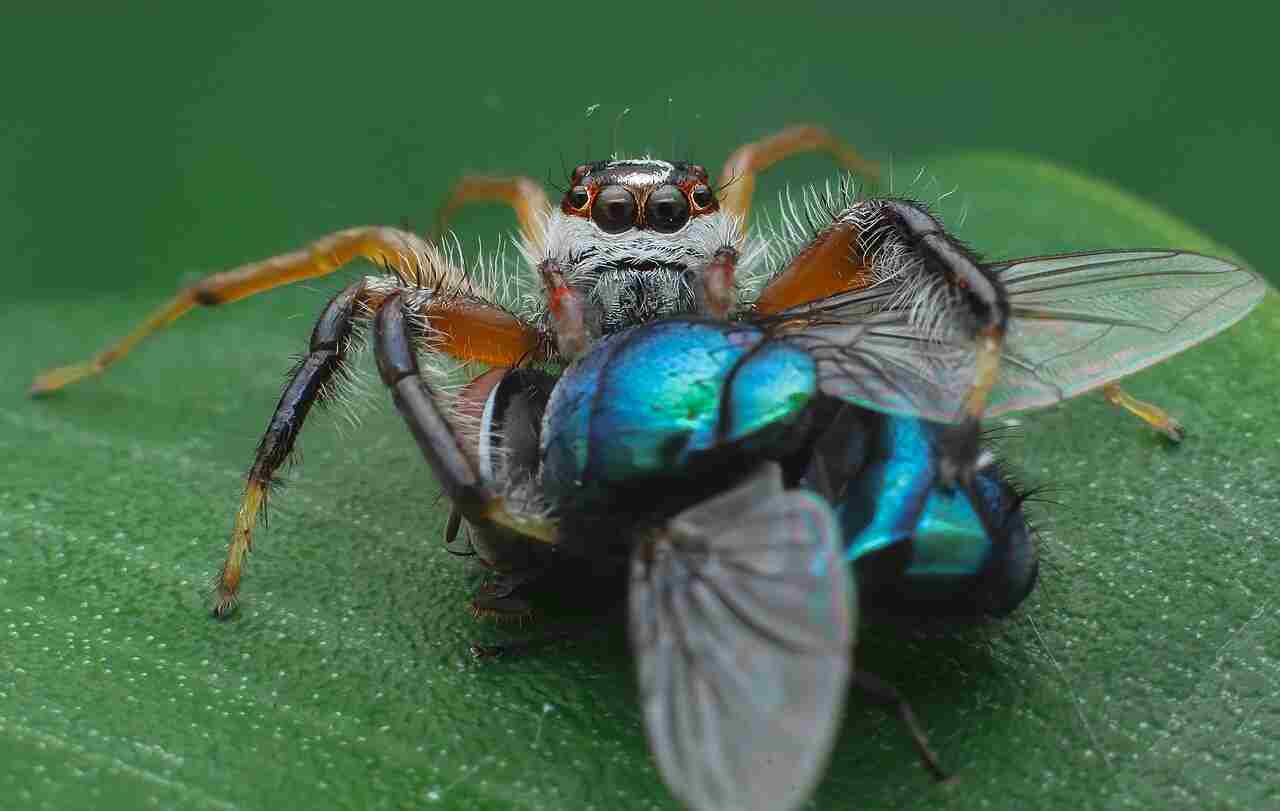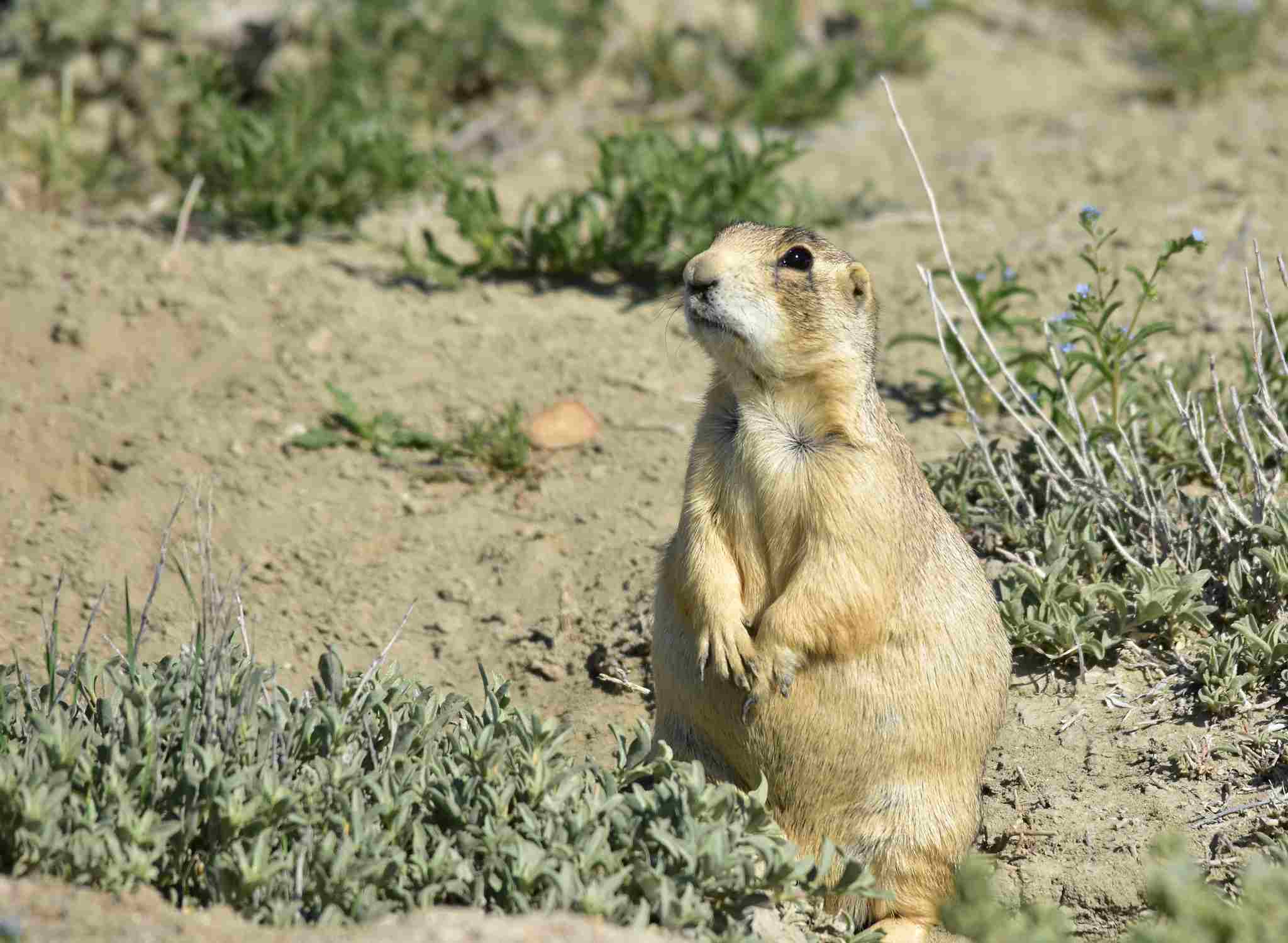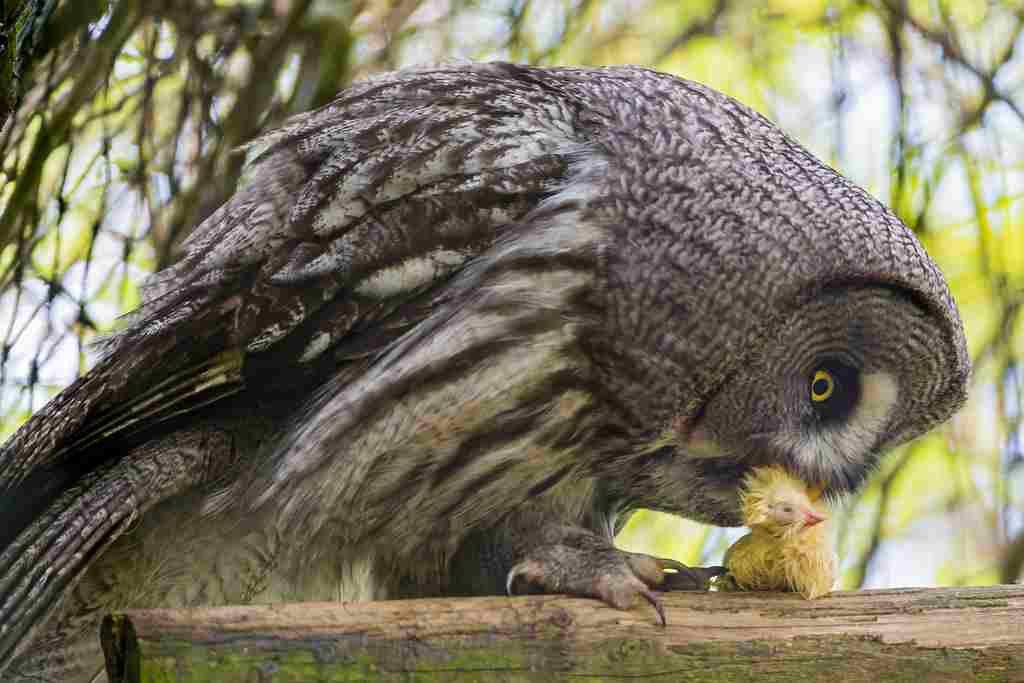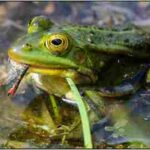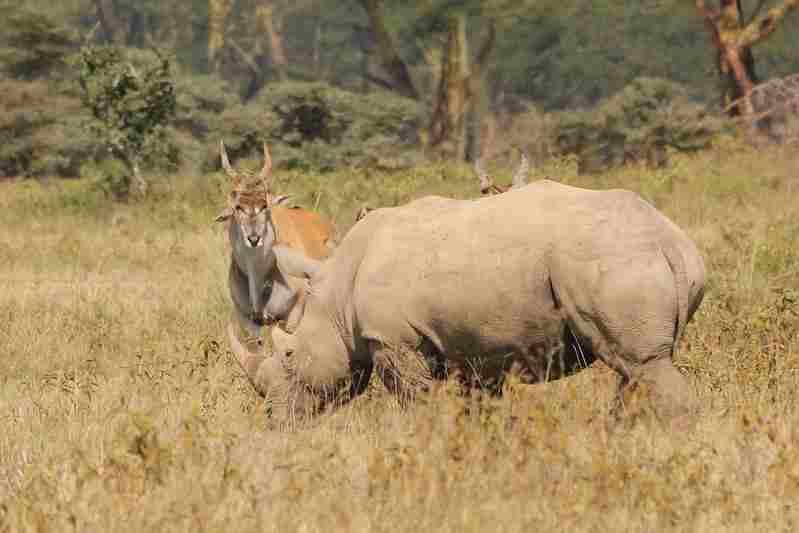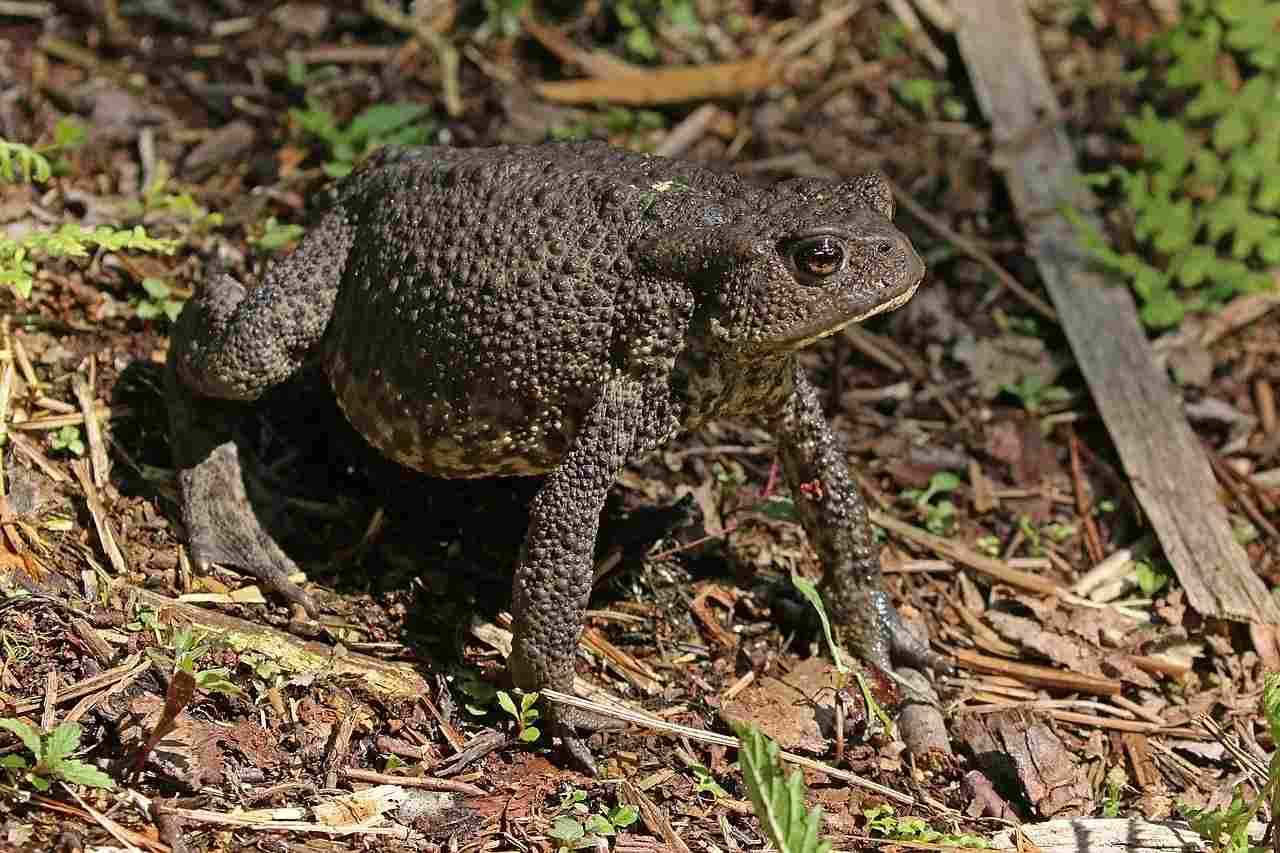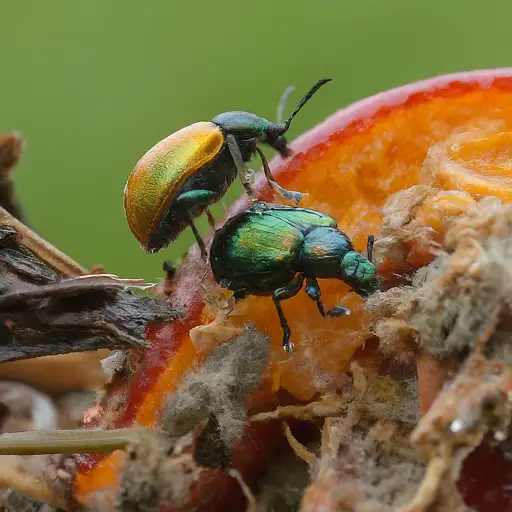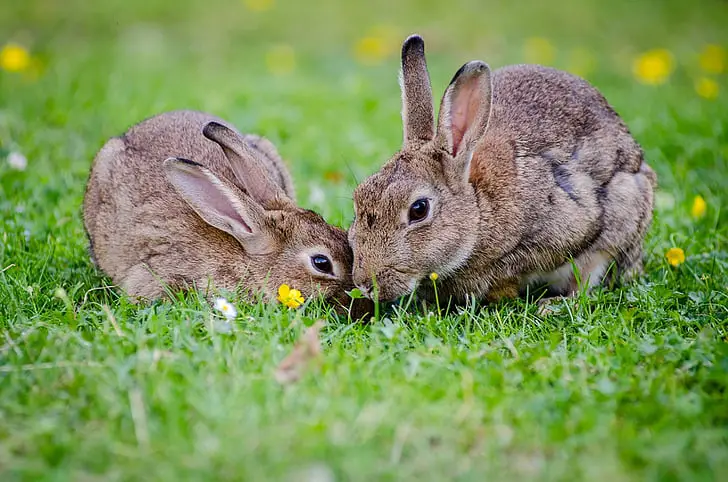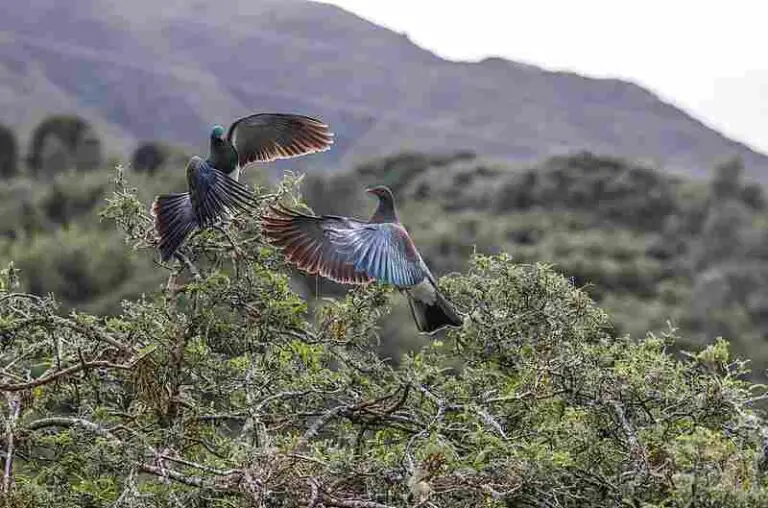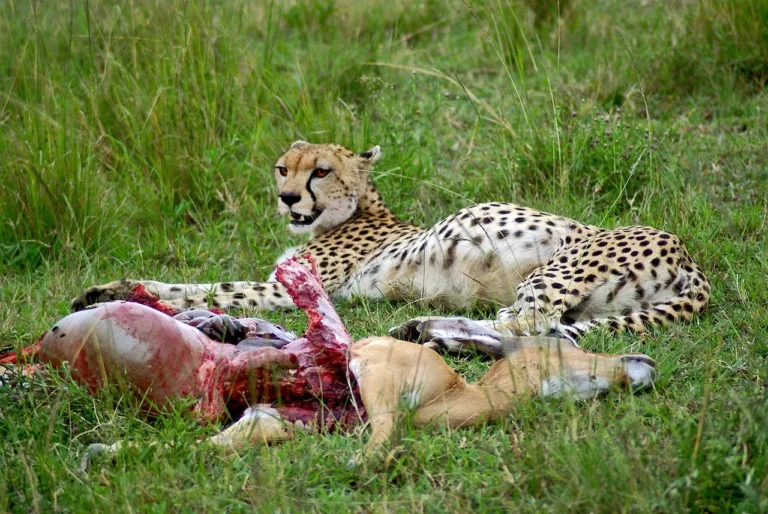11+ Secondary Consumers in the Savanna and Their Characteristics
Secondary consumers in the savanna are crucial components of the ecosystem, playing vital roles in regulating populations of primary consumers and contributing to the overall balance of the food web. They include diverse organisms such as frogs, lizards, spiders, African wild dogs, jackals, African grass owls, and African wild cats. These secondary consumers occupy various niches and habitats within the savanna, preying on insects, small vertebrates, and scavenging carrion, ultimately shaping the dynamics of the ecosystem through their feeding behavior and interactions with other species.
1. Frog
Role as a Secondary Consumer in the Savanna:
Frogs play a crucial role as secondary consumers in the savanna ecosystem, primarily feeding on insects and other small invertebrates. As secondary consumers, frogs occupy a position in the food chain above primary consumers like insects and below primary predators like birds of prey and snakes.
Habitat and Adaptations:
In the savanna, frogs are found in various habitats such as grasslands, near water bodies like ponds, streams, and marshes. Their skin is well adapted to absorb moisture, allowing them to thrive in both wet and dry conditions typical of the savanna environment. Some species of frogs have developed camouflage patterns to blend into their surroundings, providing them with protection against predators.
Diet and Feeding Behavior:
Frogs are carnivorous, consuming a diet consisting mainly of insects such as mosquitoes, flies, beetles, and ants. They are opportunistic feeders, ambushing their prey with their long, sticky tongues. Frogs also play a vital role in controlling insect populations, helping to maintain the balance within the ecosystem.
Predators and Threats:
Despite being secondary consumers, frogs face predation from various animals within the savanna, including snakes, birds, small mammals, and larger amphibians. Additionally, habitat loss, pollution, and climate change pose significant threats to frog populations in the savanna, impacting their survival and overall ecological balance.
2. Lizard
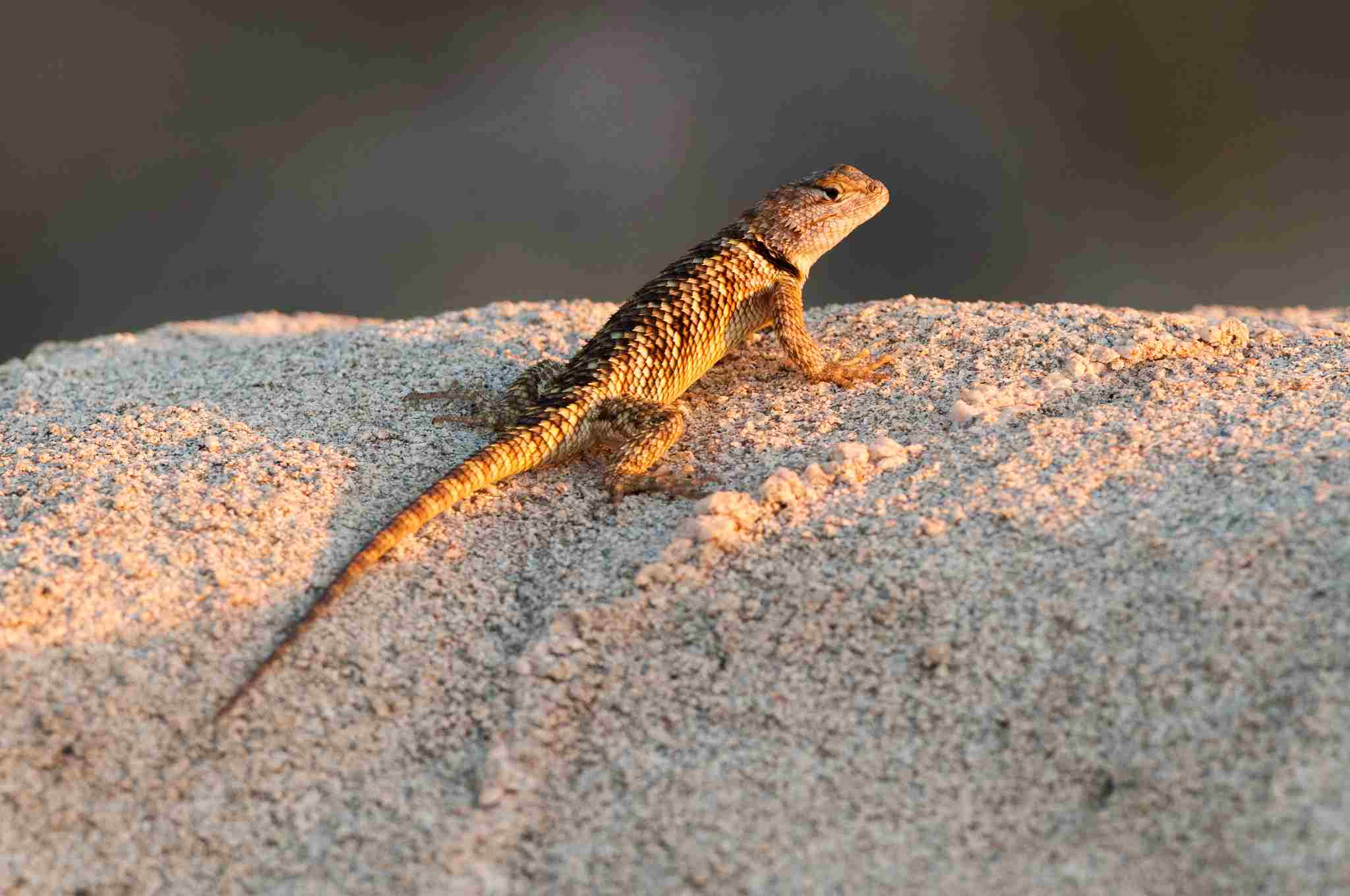
Role as a Secondary Consumer in the Savanna:
Lizards are important secondary consumers in the savanna ecosystem, preying on a variety of insects and small vertebrates. As secondary consumers, they contribute to the regulation of insect populations and serve as a food source for larger predators.
Habitat and Adaptations:
Lizards are well adapted to the diverse habitats of the savanna, including grasslands, shrublands, and rocky outcrops. Their ability to regulate body temperature through basking in the sun allows them to thrive in the warm climate of the savanna. Many species of lizards possess camouflage patterns and agile movements, helping them evade predators and hunt effectively.
Diet and Feeding Behavior:
Lizards are primarily carnivorous, feeding on insects such as beetles, grasshoppers, and ants. Some larger species may also consume small vertebrates like rodents, birds, and other lizards. They are skilled hunters, using their keen senses and quick reflexes to capture prey both on the ground and in trees.
Predators and Threats:
Despite their role as secondary consumers, lizards face predation from a variety of animals in the savanna, including birds of prey, snakes, mammals, and larger reptiles. Habitat loss, fragmentation, and human activities such as agriculture and urbanization pose significant threats to lizard populations, endangering their survival in the savanna ecosystem.
3. Spider
Role as a Secondary Consumer in the Savanna:
Spiders are essential secondary consumers in the savanna food web, preying on a wide range of insects and other arthropods. As secondary consumers, they help regulate insect populations and serve as a food source for higher-level predators.
Habitat and Adaptations:
Spiders are highly adaptable and can be found in various habitats within the savanna, including grasslands, shrublands, and forests. They possess specialized adaptations such as silk production for web-building, venom for subduing prey, and multiple eyes for detecting movement, enabling them to thrive in diverse ecological niches.
Diet and Feeding Behavior:
Spiders are carnivorous predators, feeding primarily on insects such as flies, mosquitoes, beetles, and grasshoppers. They use their silk-spinning abilities to construct intricate webs for catching prey or employ stealth and ambush tactics to capture unsuspecting insects that venture too close.
Predators and Threats:
Despite their role as secondary consumers, spiders are susceptible to predation by birds, lizards, small mammals, and other spiders. Additionally, habitat destruction, pesticide use, and climate change pose significant threats to spider populations in the savanna, impacting their ecological function and biodiversity.
5. African Wild Dog
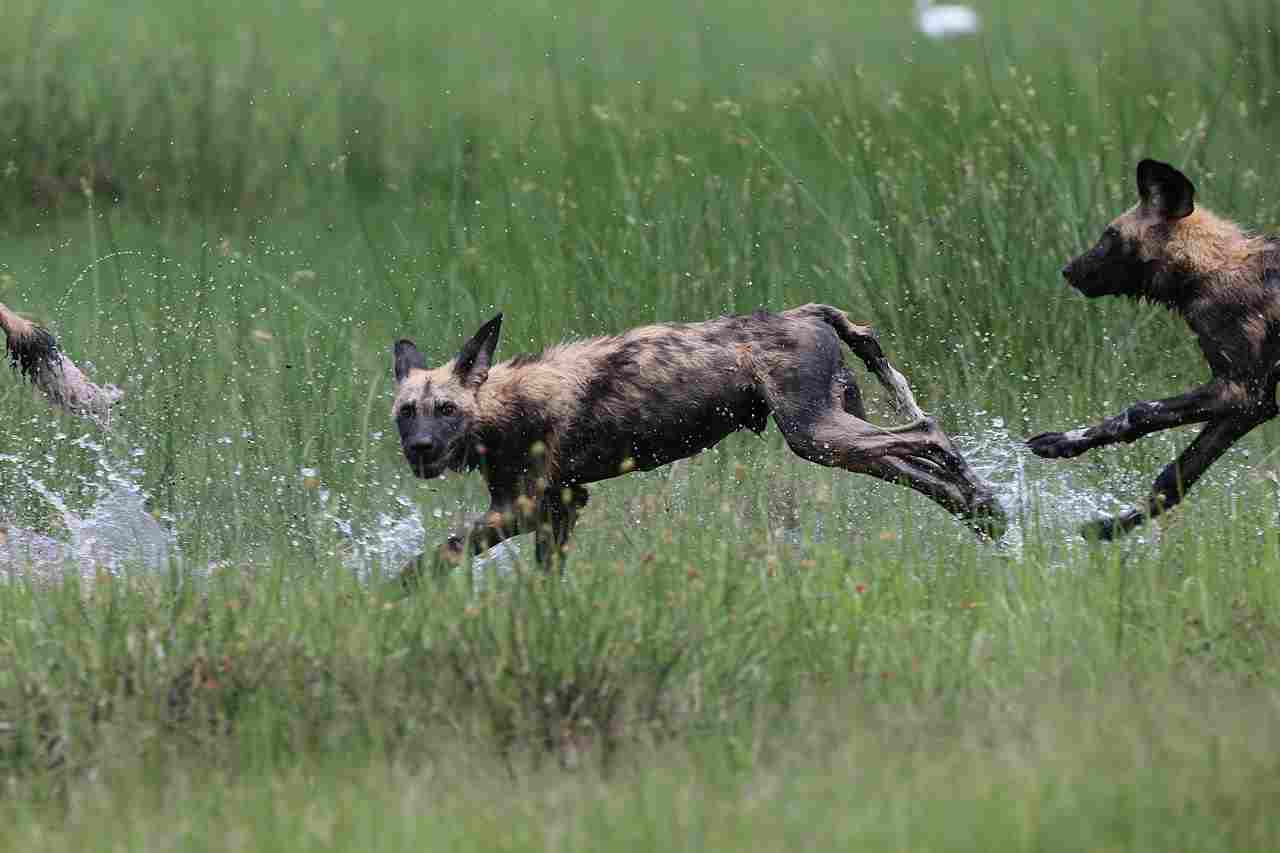
Role as a Secondary Consumer in the Savanna:
African Wild Dogs, also known as painted dogs, are apex predators in the savanna ecosystem, primarily preying on herbivores such as antelopes, gazelles, and wildebeests. As secondary consumers, they help regulate herbivore populations and contribute to the overall balance of the ecosystem.
Habitat and Adaptations:
African Wild Dogs inhabit a range of habitats within the savanna, including grasslands, woodlands, and semi-arid regions. They are highly social animals, living in packs consisting of up to 30 individuals, which allows them to effectively hunt and defend territory. Their slender build, long legs, and keen senses make them well adapted for endurance hunting in the open savanna landscape.
Diet and Feeding Behavior:
African Wild Dogs primarily prey on medium-sized ungulates, such as impalas, kudus, and zebras. They are skilled hunters, employing cooperative hunting strategies to chase down and exhaust their prey over long distances. Unlike many other predators, African Wild Dogs tend to feed quickly and efficiently, minimizing competition from scavengers.
Predators and Threats:
Despite their status as apex predators, African Wild Dogs face threats from larger predators such as lions and hyenas, which may compete with them for food or kill their pups. Additionally, habitat loss, human-wildlife conflict, and diseases transmitted by domestic dogs pose significant threats to African Wild Dog populations, endangering their survival in the savanna ecosystem.
6. Jackal
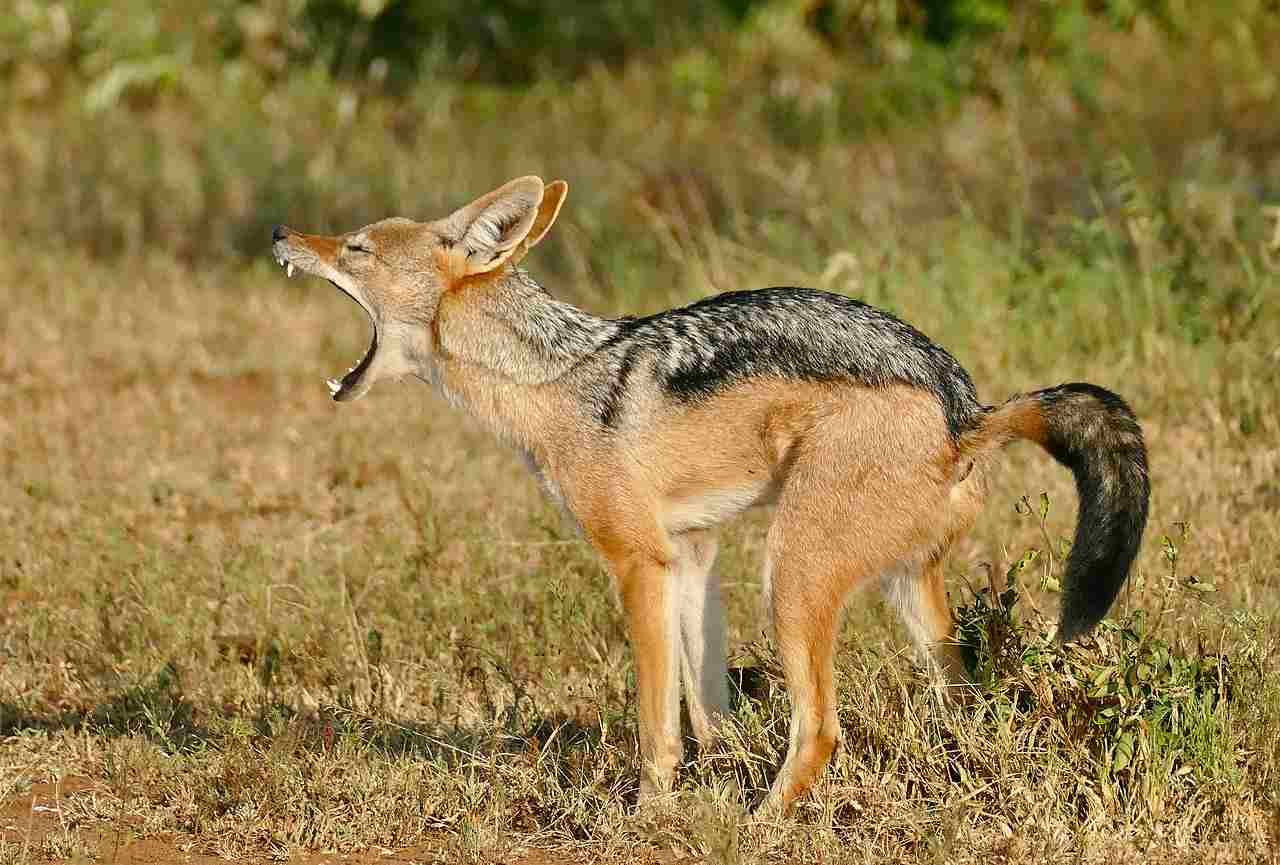
Role as a Secondary Consumer in the Savanna:
Jackals are opportunistic predators and scavengers in the savanna ecosystem, feeding on a wide variety of prey including small mammals, birds, insects, and carrion. As secondary consumers, they play a crucial role in scavenging and helping to control the population of small herbivores and insects.
Habitat and Adaptations:
Jackals are adaptable canids found in a range of habitats within the savanna, including grasslands, woodlands, and scrublands. They have excellent senses of sight, smell, and hearing, which aid them in both hunting and scavenging. Their keen sense of smell allows them to locate food sources over long distances, while their agility enables them to navigate diverse terrain.
Diet and Feeding Behavior:
Jackals are omnivorous opportunists, feeding on a diverse diet that includes small mammals, birds, reptiles, insects, fruits, and carrion. They are skilled hunters and scavengers, often forming pairs or small family groups to hunt cooperatively or scavenge from kills made by larger predators.
Predators and Threats:
While jackals are not typically preyed upon by other animals in the savanna, they face threats from larger predators such as lions, leopards, and hyenas, which may compete with them for food or pose a threat to their pups. Habitat loss, persecution by humans, and diseases transmitted by domestic dogs also pose significant threats to jackal populations in the savanna ecosystem.
7. African Grass Owl
Role as a Secondary Consumer in the Savanna:
The African Grass Owl occupies an important niche as a secondary consumer in the savanna ecosystem, primarily preying on small mammals, rodents, and insects. As a nocturnal predator, it helps regulate the populations of these prey species, contributing to the overall balance of the ecosystem.
Habitat and Adaptations:
African Grass Owls are well adapted to the grassland and savanna habitats, where they nest in tall grasses and hunt in open areas. Their cryptic plumage provides camouflage against the grassy backdrop, allowing them to remain concealed from both prey and predators. Their keen sense of hearing and silent flight enable them to detect and capture prey with precision.
Diet and Feeding Behavior:
African Grass Owls primarily feed on small mammals such as rodents (mice, rats), shrews, and occasionally small birds and insects. They hunt primarily at night, using their keen eyesight and acute hearing to locate prey in the darkness. Once they detect prey, they swoop down silently from their perch and grasp it with their talons before returning to a safe location to consume their meal.
Predators and Threats:
While African Grass Owls are apex predators in their habitat, they may face predation from larger birds of prey such as eagles and owls. Additionally, habitat loss and degradation due to agriculture, urbanization, and wildfires pose significant threats to African Grass Owl populations in the savanna, impacting their nesting sites and prey availability.
8. African Wild Cat
Role as a Secondary Consumer in the Savanna:
The African Wild Cat is a small carnivorous mammal that plays a vital role as a secondary consumer in the savanna ecosystem, preying on a variety of small mammals, birds, reptiles, and insects. As a predator, it helps regulate the populations of these prey species, contributing to the ecological balance of the ecosystem.
Habitat and Adaptations:
African Wild Cats inhabit a range of habitats within the savanna, including grasslands, woodlands, scrublands, and semi-arid regions. They are solitary and highly adaptable predators, capable of exploiting diverse food sources and habitats. Their cryptic coat pattern provides camouflage in their environment, enabling them to stalk and ambush prey effectively.
Diet and Feeding Behavior:
African Wild Cats are opportunistic hunters, feeding on a varied diet that includes small mammals such as rodents (mice, rats), birds, reptiles, insects, and occasionally larger prey such as hares and small antelopes. They use stealth and patience to stalk their prey before launching a swift attack to catch it with their sharp claws and teeth.
Predators and Threats:
While African Wild Cats are adept hunters, they face predation from larger predators such as lions, leopards, and hyenas, which may compete with them for food or pose a threat to their survival. Habitat loss, fragmentation, and persecution by humans, including trapping and hunting for fur or as pests, pose significant threats to African Wild Cat populations in the savanna ecosystem.
9. Caracal
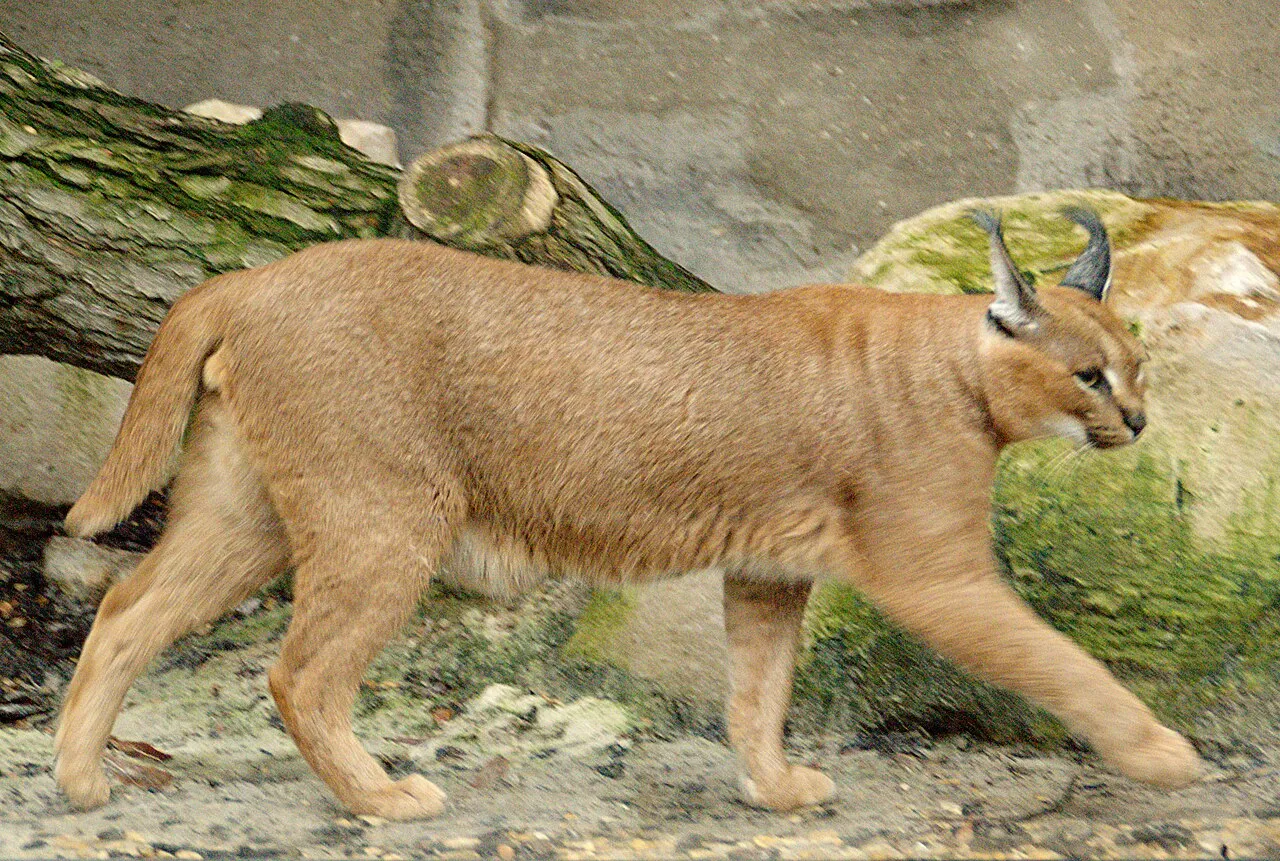
Role as a Secondary Consumer in the Savanna:
The Caracal, a medium-sized wild cat, serves as an important secondary consumer in the savanna ecosystem by preying on various small to medium-sized mammals, birds, and reptiles. As a predator, it helps regulate the populations of these prey species, contributing to the overall ecological balance of the ecosystem.
Habitat and Adaptations:
Caracals inhabit a range of habitats within the savanna, including grasslands, woodlands, scrublands, and semi-arid regions. They are highly adaptable hunters, capable of exploiting diverse food sources and habitats. Their keen senses, including acute hearing and excellent eyesight, aid them in locating prey, while their powerful hind legs enable them to leap and catch birds in flight.
Diet and Feeding Behavior:
Caracals are versatile carnivores with a diverse diet that includes small mammals such as rodents, hares, and small antelopes, as well as birds, reptiles, and insects. They are skilled stalkers and ambush predators, using stealth and patience to approach their prey before launching a sudden attack to catch it with their sharp claws and teeth.
Predators and Threats:
While Caracals are formidable predators, they may face predation from larger carnivores such as lions, leopards, and hyenas, which may compete with them for food or pose a threat to their survival. Additionally, habitat loss, fragmentation, and human activities such as hunting, trapping, and road collisions pose significant threats to Caracal populations in the savanna ecosystem.
10. African Golden Cat
Role as a Secondary Consumer in the Savanna:
The African Golden Cat, a medium-sized wild cat native to the savanna ecosystem, plays a crucial role as a secondary consumer by preying on various small mammals, birds, reptiles, and insects. As a predator, it helps regulate the populations of these prey species, contributing to the ecological balance of the ecosystem.
Habitat and Adaptations:
African Golden Cats inhabit a range of habitats within the savanna, including grasslands, woodlands, scrublands, and montane forests. They are solitary and secretive predators, capable of hunting in dense vegetation and rugged terrain. Their cryptic coat pattern provides camouflage in their environment, enabling them to stalk and ambush prey effectively.
Diet and Feeding Behavior:
African Golden Cats have a diverse diet that includes small mammals such as rodents, monkeys, birds, reptiles, and insects. They are skilled climbers and agile hunters, using stealth and patience to approach their prey before launching a sudden attack to catch it with their sharp claws and teeth.
Predators and Threats:
While African Golden Cats are adept hunters, they face predation from larger carnivores such as leopards, hyenas, and eagles, which may compete with them for food or pose a threat to their survival. Additionally, habitat loss, fragmentation, and human activities such as hunting, trapping, and habitat degradation pose significant threats to African Golden Cat populations in the savanna ecosystem.
11. Serval
Role as a Secondary Consumer in the Savanna:
The Serval, a medium-sized wild cat with distinctive spotted fur, serves as an important secondary consumer in the savanna ecosystem by preying on various small mammals, birds, reptiles, and insects. As a predator, it helps regulate the populations of these prey species, contributing to the overall ecological balance of the ecosystem.
Habitat and Adaptations:
Servals inhabit a range of habitats within the savanna, including grasslands, marshes, and wooded areas near water sources. They are well adapted to hunting in dense vegetation and marshy terrain, with long legs and large ears that aid in detecting prey. Their spotted coat provides camouflage in their environment, allowing them to stalk and ambush prey effectively.
Diet and Feeding Behavior:
Servals have a diverse diet that includes small mammals such as rodents, birds, reptiles, insects, and occasionally larger prey such as hares and small antelopes. They are skilled hunters and agile predators, capable of leaping high into the air to catch birds or pouncing swiftly on small mammals in the grass. Servals use their sharp claws and teeth to dispatch prey quickly before consuming it.
Predators and Threats:
While Servals are adept hunters, they may face predation from larger carnivores such as lions, leopards, and hyenas, which may compete with them for food or pose a threat to their survival. Additionally, habitat loss, fragmentation, and human activities such as hunting, trapping, and road collisions pose significant threats to Serval populations in the savanna ecosystem.
12. Black Footed Cat
Role as a Secondary Consumer in the Savanna:
The Black Footed Cat, one of Africa’s smallest wild cats, plays a crucial role as a secondary consumer in the savanna ecosystem by preying on various small mammals, birds, reptiles, and insects. As a predator, it helps regulate the populations of these prey species, contributing to the ecological balance of the ecosystem.
Habitat and Adaptations:
Black Footed Cats inhabit a range of habitats within the savanna, including grasslands, scrublands, and semi-arid regions. They are solitary and secretive predators, capable of hunting in dense vegetation and rocky terrain. Their dark coat coloration provides camouflage in their environment, enabling them to stalk and ambush prey effectively.
Diet and Feeding Behavior:
Black Footed Cats have a diverse diet that includes small mammals such as rodents, birds, reptiles, insects, and occasionally larger prey such as hares and small antelopes. They are skilled hunters and stealthy predators, using patience and cunning to approach their prey before launching a sudden attack to catch it with their sharp claws and teeth.
Predators and Threats:
While Black Footed Cats are adept hunters, they face predation from larger carnivores such as lions, leopards, and eagles, which may compete with them for food or pose a threat to their survival. Additionally, habitat loss, fragmentation, and human activities such as hunting, trapping, and habitat degradation pose significant threats to Black Footed Cat populations in the savanna ecosystem.
*Summary
- Frog:
- Role: Secondary consumer, feeding on insects and small invertebrates.
- Habitat: Near water bodies, grasslands.
- Diet: Insects like mosquitoes, flies, beetles.
- Threats: Predation, habitat loss, pollution, climate change.
- Lizard:
- Role: Secondary consumer, preying on insects and small vertebrates.
- Habitat: Grasslands, shrublands, rocky outcrops.
- Diet: Insects, small vertebrates.
- Threats: Predation, habitat loss, fragmentation, human activities.
- Spider:
- Role: Secondary consumer, feeding on insects and arthropods.
- Habitat: Grasslands, shrublands, forests.
- Diet: Insects like flies, mosquitoes, beetles.
- Threats: Predation, habitat destruction, pesticide use, climate change.
- African Wild Dog:
- Role: Secondary consumer, apex predator, preying on herbivores.
- Habitat: Grasslands, woodlands, scrublands.
- Diet: Herbivores like antelopes, zebras, wildebeests.
- Threats: Predation, competition, habitat loss, human activities.
- Jackal:
- Role: Secondary consumer, scavenger, feeding on small vertebrates, insects, fruits.
- Habitat: Grasslands, woodlands, semi-arid regions.
- Diet: Small mammals, birds, insects, carrion.
- Threats: Predation, competition, habitat destruction, human activities.
- African Grass Owl:
- Role: Secondary consumer, nocturnal predator, feeding on small mammals, insects.
- Habitat: Grasslands, marshes, savannas.
- Diet: Small mammals like rodents, shrews, birds.
- Threats: Predation, habitat loss, human disturbance.
- African Wild Cat:
- Role: Secondary consumer, nocturnal predator, feeding on small mammals, birds, reptiles, insects.
- Habitat: Grasslands, woodlands, scrublands.
- Diet: Small mammals like rodents, rabbits, birds, reptiles, insects.
- Threats: Predation, habitat loss, human activities.
| Organism | Summary |
| Frog |
– Role: Secondary consumer, feeding on insects and small invertebrates.
|
|
– Habitat: Near water bodies, grasslands.
|
|
|
– Diet: Insects like mosquitoes, flies, beetles.
|
|
|
– Threats: Predation, habitat loss, pollution, climate change.
|
|
| Lizard |
– Role: Secondary consumer, preying on insects and small vertebrates.
|
|
– Habitat: Grasslands, shrublands, rocky outcrops.
|
|
|
– Diet: Insects, small vertebrates.
|
|
|
– Threats: Predation, habitat loss, fragmentation, human activities.
|
|
| Spider |
– Role: Secondary consumer, feeding on insects and arthropods.
|
|
– Habitat: Grasslands, shrublands, forests.
|
|
|
– Diet: Insects like flies, mosquitoes, beetles.
|
|
|
– Threats: Predation, habitat destruction, pesticide use, climate change.
|
|
| African Wild Dog |
– Role: Secondary consumer, apex predator, preying on herbivores.
|
|
– Habitat: Grasslands, woodlands, scrublands.
|
|
|
– Diet: Herbivores like antelopes, zebras, wildebeests.
|
|
|
– Threats: Predation, competition, habitat loss, human activities.
|
|
| Jackal |
– Role: Secondary consumer, scavenger, feeding on small vertebrates, insects, fruits.
|
|
– Habitat: Grasslands, woodlands, semi-arid regions.
|
|
|
– Diet: Small mammals, birds, insects, carrion.
|
|
|
– Threats: Predation, competition, habitat destruction, human activities.
|
|
| African Grass Owl |
– Role: Secondary consumer, nocturnal predator, feeding on small mammals, insects.
|
|
– Habitat: Grasslands, marshes, savannas.
|
|
|
– Diet: Small mammals like rodents, shrews, birds.
|
|
|
– Threats: Predation, habitat loss, human disturbance.
|
|
| African Wild Cat |
– Role: Secondary consumer, nocturnal predator, feeding on small mammals, birds, reptiles, insects.
|
|
– Habitat: Grasslands, woodlands, scrublands.
|
|
|
– Diet: Small mammals like rodents, rabbits, birds, reptiles, insects.
|
|
|
– Threats: Predation, habitat loss, human activities.
|
*Related FAQs
- Why are secondary consumers important in the savanna ecosystem?
- Secondary consumers play a crucial role in the savanna ecosystem by regulating the populations of primary consumers (herbivores) and balancing the food web. They help control herbivore populations, preventing overgrazing and maintaining the health of plant communities.
- What are the main threats to secondary consumers in the savanna?
- Secondary consumers in the savanna face various threats, including habitat loss and fragmentation due to human activities such as agriculture, urbanization, and infrastructure development. Additionally, they are vulnerable to predation from larger carnivores and competition for resources within their ecological niche.
- How do secondary consumers adapt to survive in the savanna environment?
- Secondary consumers in the savanna have evolved various adaptations to thrive in their habitat. These adaptations may include physical characteristics such as camouflage, agility, and specialized hunting techniques. Behavioral adaptations such as nocturnal activity, social behavior, and efficient energy conservation also contribute to their survival in the savanna.
- What is the role of apex predators in regulating secondary consumer populations?
- Apex predators, such as lions and hyenas in the savanna, play a vital role in regulating the populations of secondary consumers by controlling the abundance and distribution of herbivores. By preying on herbivores, apex predators indirectly influence the behavior and population dynamics of secondary consumers, helping to maintain ecosystem balance.
- How do human activities impact secondary consumer populations in the savanna?
- Human activities such as habitat destruction, pollution, poaching, and climate change have significant negative impacts on secondary consumer populations in the savanna. These activities can lead to habitat loss, fragmentation, decreased prey availability, and increased vulnerability to predators, threatening the survival of species and disrupting ecosystem dynamics.
